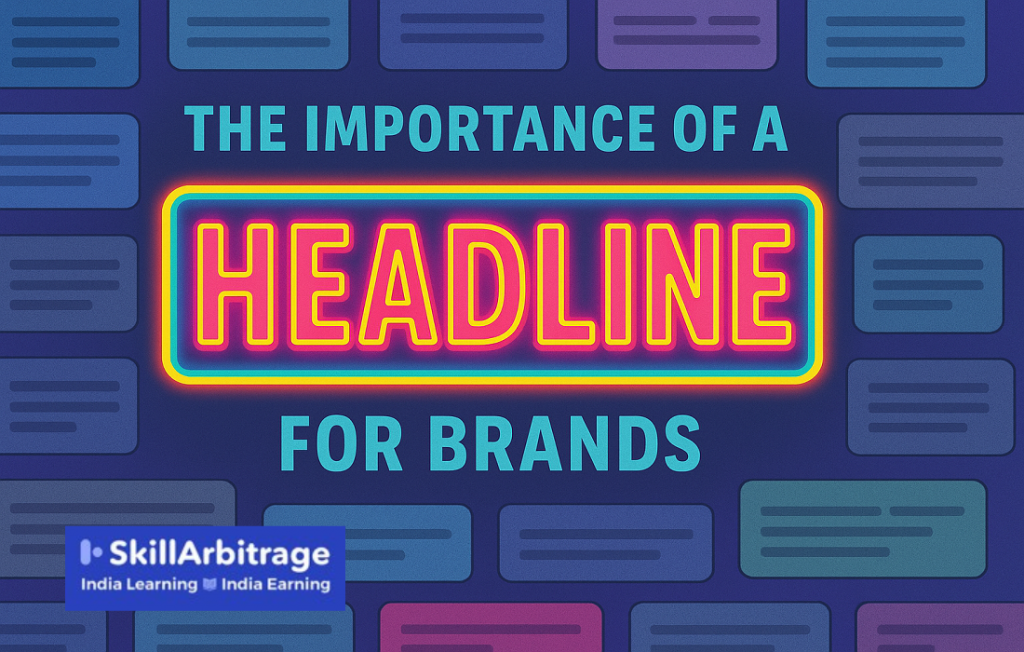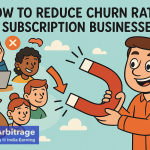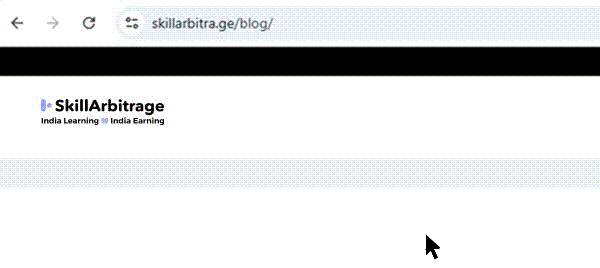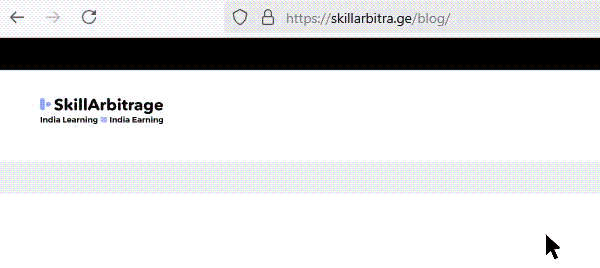This blog is a detailed analysis of the skill of writing a headline. It examines legendary headline case studies and explains, with clear examples, how to write one yourself. It would be valuable for content writers, strategists, marketers, and small business and startup owners who want to learn the simple formula of writing superlative headlines.
Table of Contents
Introduction
Spring had passed by as suddenly as it came. I felt morose, more so because I was failing miserably at belting out some good headlines for Glam.
I sadly looked at the blinking screen in front of me.
“Be Bold. Be Glam.”
“Make it last like Glam”
No, these were not good. It was evident I would need some help. So, I reached out to my mentor, the person who first taught me how to write headlines, Nidhi.
She confirmed what I had felt. “There is nothing really bad about these but there’s nothing good either. Headline writing is a very specific skill, and even the most experienced copywriters sometimes struggle with it. L’Oreal says, ‘You are worth it!,’ Nike says, ‘Just do it,’ and the audience not only takes notice but somehow feels compelled to take action. This is the power of a good headline.”
Generally, the smallest part of an advertisement, the headline, is also the most important.
They are the things that entice the audience, to read the whole advertisement instead of scrolling past.
Nidhi continued, “But being iconic wasn’t the only thing headlines did. They impacted the marketing cost of a brand, and, thus, majorly impacted the revenue of any brand with regard to its ROI on ad budgets.”
She was right of course.
Why are headlines important?
Increases ROI on ad spend
The headline is an ad’s first impression. No matter how stunning the visuals are, if the headline flops, the scroll continues, and the ad flops.
Nobody ever said, “Oh, what a catchy sub-head, let me read what the ad says”.
A good headline pulls attention and clicks, which translates to cheaper and more effective ads.
A scroll-stopping headline = better Click Through Rate (CTR)
Better CTR = Cheaper Clicks.
Result? You stretch your ad budget without spending more.
Boosts conversion rates across the funnel
The right headline is like the curtain going up, and the stage is set for audience expectations to be created and met in the space of the piece of content itself.
Whether it’s a landing page, email, or product page, a compelling headline instantly hooks, aligns expectations, and nudges the user to stay.
And the longer they stay, the higher your chances of conversion.
Cuts creative fatigue & extends campaign lifespan
Ad fatigue is a very real thing, and it can cost a brand.
When people stop noticing your creativity, your marketing performance drops really fast. A strong headline refreshes your messaging instantly without having to invest time and money in a visual overhaul.
Improves brand recall and organic sharing
Memorable headlines do more than sell, they spread like wildfire till they become almost a pop culture phenomenon.
If it’s witty, emotional, or deeply relatable, it gets screenshotted, shared, and remembered. That’s free distribution and unpaid PR, just because your headline hit the mark.
Aligns marketing & sales messaging
A good headline simplifies the product’s story.
When your message is crystal clear, everyone from sales reps to influencers can echo it consistently. That consistency means trust, and trust means easier conversions.
Great headlines are immortal
Some headlines become legends. Think of Everest’s “Taste Mein best, Mummy aur Everest” or L’Oréal’s “Because You’re Worth It.” The right line becomes a brand asset that lives far beyond a campaign, embedding itself into culture and memory.
I said “But every headline can’t be iconic!
Nidhi said, “But think of what they can achieve when they are!”
With that I remembered all the iconic headlines that became the stuff of advertising legend.
Iconic headlines that stole the show
Here are examples of famous real-life marketing headlines that are forever etched in public memory!
“Just Do It” (Nike, 1988)
Nike’s iconic slogan, used in print ads, billboards, and TV commercials, became the headline that would define their brand identity.
This three-word phrase is a powerful call to action, radiating motivation and universality. It taps into the audience’s desire for achievement, whether athletic or personal. The genius of this was that it did not specify a product, making it timeless.
Its brevity and commanding tone inspired action, boosting Nike’s brand recognition and sales, with the campaign credited for helping Nike overtake Reebok in market share by the early 1990s.
“Think Different” (Apple, 1997)
This headline was used in Apple’s print and TV ads during their resurgence, celebrating innovators like Einstein and Gandhi.
(Source: Apple – Think Different – Full Version)
It positioned Apple as a rebellious, creative brand for visionaries. The word “different” challenged conformity, resonating with a tech-savvy, individualistic audience who were on the side of innovations.
The campaign helped Apple recover from near bankruptcy, with a 9000% growth.
“Because You’re Worth It” (L’Oréal Paris, 1973)
Featured in ads for hair and beauty products, this headline for the cosmetic giant, L’Oreal Paris emphasized self-esteem and spoke directly to women.
(Source: https://www.lorealparisusa.com/because-youre-worth-it) .
It empowered women by tying beauty to self-worth, a bold move in the ‘70s. Its emotional appeal made consumers feel valued, not just sold to.
The inclusive “you” invited everyone, driving L’Oréal’s global dominance.
By 1980, the brand was a household name, with the slogan still in use today, nearly forty years after.
“The Ultimate Driving Machine” (BMW, 1975)
This headline was used in ads emphasizing BMW’s engineering and performance, targeting car enthusiasts.
It appealed to aspirational buyers who craved status and quality, creating a clear brand identity.
(Source: https://www.bmwblog.com/2025/02/12/bmw-ultimate-driving-machine-origin-story/)
The slogan helped BMW’s U.S. sales grow by leaps and bounds, cementing its luxury market dominance.
A good headline could literally save a brand and make it iconic.
Coming back to mine, they were no where in the same league.
Nidhi went through each of them and told me precisely why they did not work.
Why my headlines did not work
1. “Be Bold. Be Glamorous.”
“Yes, it has alliteration and a ring, but you need something more to make it work,” Nidhi said. I agreed with her.
Why it doesn’t work:
- Overused, cliché, and not ownable.
- Doesn’t build brand recall or distinctiveness—this could be any brand from L’Oréal to Lakmé.
- Lacks a clear product proposition, emotional payoff, or modern cultural relevance.
2. Lipsticks for Every Woman
“When you sell something to everybody, you don’t sell it to anybody. Even if the Target Group is wide, the product benefit has to be specific, like SPF 50 Sun Protection on a sunscreen for everybody and Glycerine soaps for dry skin.” Nidhi said.
Why it doesn’t work:
- Didn’t cater to Glam’s specific niche: 18–34-year-old Indian women.
- Dilutes focus and reduces emotional connection by trying to be universal.
- Ignores the insights of what this specific audience desires—identity, vibe, community, aesthetic appeal.
3. Long-Lasting Lipstick at a Great Price
“This one was too mass-ey and yet defied the product category. A lipstick is not really essential like food or water, it makes the wearer look beautiful and feel good. Purely value-for-money deals will not work here.” Nidhi continued.
Why it doesn’t work:
- Purely transactional. No brand personality or storytelling.
- This headline sounds like a mass-market supermarket ad. Glam is supposed to feel aspirational yet accessible.
- Also, “great price” is vague—either give a proof point or focus on perceived value.
4. Cruelty-Free Colours You’ll Love
Why it doesn’t work:
- Technically correct, emotionally flat.
- Doesn’t evoke why cruelty-free matters to the target audience. (Compassion? Empowerment? Trend-conscious ethics?)
- No brand voice or attitude—it feels like a label on the back of a pack, not a hero headline.
5. Makeup That Moves with You
I literally held my breath while she took a look at the last one. I had specifically left the worst for the very last.
She shook her head. “ This one does not really mean anything. If you meant they can carry it, then I should have said that, but even then, it did not make any sense.
6. When was there a lipstick you could not carry in your purse?”
Why it doesn’t work:
- Too abstract and vague. What does “moves with you” actually mean?
- No visual or functional cue—misses the chance to show off Glam’s long-lasting or high-performance edge.
- Sounds like a line better suited for athleisure, not lipstick.
“ Nidhi I really need some good headlines. The deadline was yesterday!” I could hear the panic in my own voice.
“ Relax. You will get there. Remember the steps.” She said.
That’s when I approached it with structure. I applied the failsafe step-by-step formula to it.
The step-by-step formula for writing a great headline
Identifying the Target Audience:
I had to customize the headline to suit Glam’s specific customer segments. I already knew who they were.
The demographics was defined (e.g., women aged 18-35 years) as was the psychographics (e.g., bold, trend-conscious, eco-friendly).
For Glam, I also considered niches like “adventurous buyers” who love vibrant colors or “minimalist professionals” seeking subtle shades.
If targeting young, trendy women, the headline should feel fresh and fashion-forward.
Something like this, maybe.
Not Just Lipstick. It’s a Whole Mood.
Why it works:
- It taps into Gen Z and Millennial slang—“mood” connects with how young women express identity.
- Builds brand personality—fun, vibey, self-expressive.
- It elevates the product from functional to emotional.
Step 2: Highlighting Glam’s Unique Value Proposition (UVP)
It was necessary to differentiate Glam from competitors in this crowded a market as beauty, to attract leads.
I needed to pinpoint what sets Glam apart—e.g., cruelty-free formulas, long-lasting wear, or unique shades and talk about that in the headline.
Here’s something that could work:
100% Cruelty-Free. 200% Confidence.
Why it works:
- Communicates an ethical USP (cruelty-free) and emotional payoff (confidence).
- Uses contrast and exaggeration playfully—adds rhythm and memorability.
- It appeals to women who care about values but still want performance.
Step 3: Using power words to evoke emotion
Generally, emotional triggers (e.g., excitement, curiosity, urgency) increase engagement and clicks.
So I needed to incorporate words like “bold,” “stunning,” “secret,” or “must-have” that align with Glam’s brand vibe. I specifically avoided overused buzzwords like “amazing”.
So, I came up with this:
Your Shade. Your Vibe. Your Glam.
Why it works:
- Personalization sells. It puts her (the potential consumer), at the center of the message.
- Repetition with variation builds rhythm and emotional charge.
- It subtly conveys variety in shades, identity, and expression—all key decision drivers.
Keeping it clear and concise
It was vitally important to keep headlines short and snappy and still incorporate the benefits and USPs.
A short, direct headline ensures instant understanding, critical for ad platforms with character limits (e.g., Google Ads: 30 characters per headline).
I came up with a a six-word headline that highlighted a key benefit, i.e., “long-lasting”.
Wears All Day. Slays All Night.
Why it works:
- Snappy + rhythmic = guaranteed memorability.
- Communicates long-lasting benefit in a way that aligns with the lifestyle of young, social women.
- It’s empowering, punchy, and fits both campus life and club nights.
Adding a curiosity or urgency hook
These two things, curiosity and urgency, are immediate action drivers. Generally, phrases like “don’t miss,” “only today,” or “why everyone loves.” were great for driving action.
So I tried something like this:
Bold Colours. Zero Compromise. On Sale Today!
Why it works:
- Direct and confident tone aligns with the modern, self-assured Indian woman and drives action.
- Signals product strength (bold pigmentation) and ethical standards (cruelty-free, no compromise).
- Great for use on product packaging, ads, or digital banners.
Even before I showed it to Nidhi, I knew these would work. And when she said her patent simple “Well done!” I knew I was right.
There was just one step remaining.
Testing and refining
A/B testing always ensures that the headline maximizes clicks and conversions for Glam’s ads.
So I created 2-3 variations (e.g., benefit-focused vs. curiosity-driven) and ran them on platforms like Google Ads or Instagram to see which worked better.
Analysis of CTR and conversion data after 1-2 weeks was the key to this.
You want to know how it turned out?
I was happy to note that all the headlines I crafted using my formula worked and now I knew I could draft more, anytime I wanted to! Thank God for mentors lik the one I had.
Conclusion
Crafting a good headline is both an art and a science, blending creativity and strategy to capture attention in a crowded world. By writing five generic headlines at first and analysing them, I understood what I needed to write an effective headline.
The key to it was understanding your audience, highlighting your unique value, and tapping into emotions that resonate. With these three things you can transform a simple phrase into a powerful hook that drives engagement and action.
Whether you are writing for a small brand carving a niche or a global player reinforcing dominance, the right headline bridges your message to your audience, sparking curiosity and trust.
Try testing, refining relentlessly, and staying authentic—because a great headline doesn’t just sell; it starts a conversation that lasts.
FAQs
1. What’s the ideal word count for a headline?
Answer:
Headlines with 8 words tend to get the highest click-through rates because they convey value without overwhelming the reader. If it’s for SEO, aim for under 60 characters so it doesn’t get cut off in Google’s search results.
2. How do I test if my headline is actually good or just sounds catchy to me?
Answer:
Use tools like CoSchedule Headline Analyzer or Sharethrough Headline Analyzer. But beyond tools, test in the wild:
- A/B test subject lines in email campaigns.
- Try different headline versions on social media posts and measure CTR.
- Ask a colleague or reader: “Would you click this? Why or why not?”
Also, check if your headline answers this:
“If someone only read this line, would they still want to know more?”
3. Should I always include keywords in my headlines for SEO?
Answer:
Yes — but naturally. Keyword stuffing makes headlines robotic and kills reader interest.
Instead:
- Use your primary keyword near the beginning.
- Blend it smoothly with a benefit or hook.
5. Is it better to be clever or clear in a headline?
Answer:
Clear wins. Always.
A clever pun might amuse you, but if it confuses the reader, they scroll past. In digital content, your job is to stop the scroll.
If you can be clever and clear — perfect. But if you have to choose, clarity > creativity.
Ask:
“Would someone outside my industry instantly get what this headline means?”
6. How can I make my headline stand out in a saturated niche?
Answer:
3 hacks:
- Use a fresh angle – Instead of “Which lipstick shade is right for me.” try “The 7 summer shades for Indian Divas”.
- Add specificity – Numbers, timeframes, unexpected adjectives. E.g., “5 Shades to wear in office.
- Challenge assumptions – Headlines that go against the grain (without being clickbait) can spark curiosity. Eg: “ Not every shade is for every one.”
7. What’s the difference between headlines that attract clicks vs. those that retain readers?
Answer:
Click-attracting headlines use curiosity gaps, numbers, or emotional triggers. But if they overpromise and underdeliver, readers bounce.
Retention-worthy headlines do both:
- Set a clear, honest expectation.
- Match the tone and substance of the content.
Think of your headline as a promise — the intro and body must fulfill it.
8. Can AI tools really help in writing better headlines, or are they generic?
Answer:
AI tools like ChatGPT or Jasper can speed up ideation and break writer’s block — but they often produce generic outputs unless you give specific prompts.
Tip: Feed the AI:
- Your content’s main promise
- Tone (e.g., bold, witty, professional)
- Target audience
Then refine the suggestions manually. AI gives you raw clay, not the final sculpture.
10. Should I write the headline before or after the content?
Answer:
Both — here’s how:
- Before writing: Draft a working headline to stay focused.
- After writing: Rewrite it for clarity, emotion, and accuracy.
Often, the final headline comes together once the content’s voice and direction are clear. Some pros even write 10–15 versions before picking one.







 Allow notifications
Allow notifications
